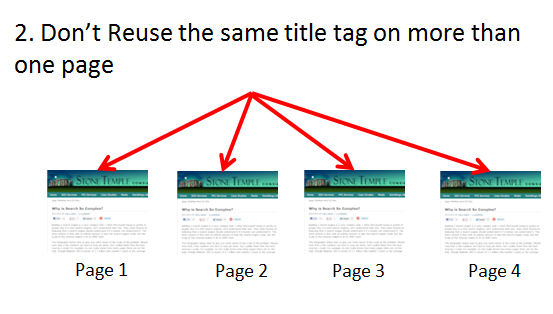The role of metatags is misunderstood by some members of the webmaster community. I still have people who are not in the business come up to me and talk about SEO as if it’s all about picking keywords metatags. I try not to cringe when I get into these discussions. I once had an idea for an article about this. The article was going to be completely blank. Only those that were enterprising enough to look at the source would have seen the content of the article in the keyword metatags:
<meta name="keywords" content="keywords, metatags, do, not, matter" />
I have built tons of high ranking sites and not implemented any keywords metatags at all. In fact, Matt Cutts confirmed in 2009 that Google does not use the keywords metatag. The fundamental reason for search engines to ignore the keyword metatag is that spammers abused it in the early days of SEO.
Search engines prefer to focus all of their attention on “user visible” text. The user can’t see the keywords metatags unless they view the source of your web page. It’s this invisible aspect that makes the keywords metatag so attractive for a spammer to abuse it.
So what about metatags in general? This article will provide an overview of their value and the best way to use them.
Title Tag
The title tag is the single most important “on page” element in telling a search engine what your page is all about. Yes, the title tag is incredibly important. During the design of your site, you should have decided on the best keywords for each of your pages. For each page, you should use the most important keywords (note: keywords means “search phrases” as used in this article) in your title tag. For example, if the most important keyword for your page is “blue widgets”, you may use a title tag such as:
<title>Blue Widgets from Blue Widget Manufacturing</title>
You can emphasize more than one keyword, but should limit it to no more than 3, as follows:
<title>Blue Widgets, Round Blue Widgets, and Square Blue Widgets</title>
Note that we trimmed off the company name in this example. There are some SEOs that recommend that it’s best to keep your title tag to 65 characters or less. Our opinion is that longer title tags are probably not harmful, but the extra characters are ignored by some search engines. Given that the extra characters are ignored, we tend to keep ours less than 65 characters.
The Two Golden Rules of Title Tags
- You should have a separate page for each major customer product/service/need that you address, and the title tag should focus on the unique content of the page:
 |
- Do not use the same title tag on more than one page. This just causes them to compete with each other in the search results. If the pages are not really different, than why would they both exist? This suggests a bad search engine experience, and the search engines don’t like it either.
 |
Description Metatag
This metatag also sees limited use by search engines. Like the keywords metatag, it is not generally speaking user visible. I know of no search engine that considers the content of the description metatag for page ranking purposes. However, a search engine may use your description metatag as the description of your page that it displays in search results.
Google, for example, does this if it can’t find enough text on your page to develop a good page summary on its own. For that reason, you should make sure that you write a good description metatag for your pages. Since this description may show up in the search results shown by search engines, you want the description to be well written enough that it will help entice the user to click on the link to your site instead of a link to someone else’s site.
Keep the description metatag crisp, just a few lines of text. Don’t stuff it with keywords. Remember, search engines do not use this tag for ranking purposes. Write something that tells the user why they should come to your page – what benefit will they get by doing so. Straightforward, basic marketing. Here is a simple example:
<meta name="description" content="Blue Widgets: Low Cost, High Quality Blue Widgets available for Order Online. Delivered to your Doorstep in 48 hours or less." />
Keywords Metatag
So should you implement a keywords metatag? I never do. If someone in your company is insistent, then spend 10 seconds or less and pick some keywords that relate to the unique aspects of the page.
Robots Metatag
The Robots metatag is relatively new. Both Google and Bind support this tag. It is designed to allow you to tell a search engine when you do not want it to index your page, and/or when you do not want the search engine to look at or evaluate any of the links on your page. The basic format of the metatag is:
<meta name="robots" content="noindex,nofollow">
You can specify either attribute, both attributes, or neither attribute by simply not including the robots metatag. Click here for more detailed information on the robots metatag
Summary
Understanding how to use metatags can be useful. The title tag is critical, the description metatag is important, and the Robots metatag can be useful in certain situations. Prioritize your time accordingly!
